Thingiverse

Eternia scaled one in sixty million by tato_713
by Thingiverse
Last crawled date: 2 years, 10 months ago
This is the planet of the Masters of the Universe series, including He-Man and She-Ra. I did this in order to take advantage of near upcoming nippled Netflix reboot of the serie. This is easily the most cartoonish model I've ever made, since there are not so many topological features recognisable from space, so I exaggerate some placed to be seen in the model. For example, there is a tiny cube representing the Grayskull Castle, that, if it was scaled, it would size about 40 km long.
The file's names explained: name_1_x_10_y.stl is 1 : x * 10y. So _1_6_10_7 is 1:600000000 or one in 60 million.
The size of Eternia
Like most of fantasy planets, a clear reference about its size is absent, and like most of these stories, the time it takes to travel between different parts is inconsistent with planetary sizes. But in order to get a decent planet sized planet, I take one measure I read in this blog of "a third smaller" than Earth, that is, a diameter between Mars and Venus. This comes from an UK MotU Comic, which I have not access, so I cannot verify it.
A side note about the "environment" of Eternia is that there is a "light hemisphere" and a "dark hemisphere". That, for astronomy enthusiast like moi, is an obvious sign of a tidal locked planet. It was theorized that an abundant atmosphere could make a tidal locked planet fully habitable. However, I saw a few episodes, and it seems to be a day cycle, at least, in the "light side". This can be explained with a moderately eccentric orbit, like Mercury's, making a "tumbling" movement, because of the different velocities during along the orbit path, resulting in a pseudo-day cycle in the terminator line longitudes.
References
Surf to STL function for MATLAB
I spend part of my time making these models, letting them available and free for everyone. If you want to support my work, you can contribute with me here:
Other astronomical objects
Object
Scale [1:x]
K = 103 (thousand)M = 106 (million)G = 109 (billion)
Image
Inner Solar System
Mercury
20M, 60M,
120M
Venus
60M,
120M,
250M
Earth
60M,
120M,
250M
Luna
10M, 20M,
60M
Mars
20M, 60M,
120M
Phobos and Deimos
200K,
500K
Artificial
Salyut 7
40, 48, 80, 160
Near Earth Asteroids
Moshup and Squannit
8K,
20K,
40K
Ra-Shalom
20K,
40K
Castalia
8K,
20K,
40K
Bacchus
8K,
20K
Bennu
3K,
8K
Ryugu
3K, 8K,
20K
Geographos
40K,
80K
Phaethon
40K,
80K
Itokawa
3K,
8K
Eros
80K, 200K,
500K
Nereus
3K,
8K
Didymos and Dimorphos
8K, 20K
Mithra
20K,
40K
Golevka
8K
Toutatis
40K,
80K
Main Asteroid Belt
Gaspra
200K
Annefrank
40K,
80K
Braille
20K,
40K
Vesta
2M, 4M,
10M
Šteins
40K,
80K,
200K
Iris
2M,
4M
Hebe
1M,
2M,
4M
Lutetia
500K, 1M,
2M
Julia
1M,
2M,
4M
Mathilde
500K,
1M
Juno
2M,
4M
Ceres
4M,
10M
Pallas
4M,
10M
Kleopatra
2M,
4M
Ida
500K,
1M
Psyche
2M,
4M
Interamnia
2M,
4M
Hygiea
2M,
4M,
10M
Antiope
1M,
2M
Jovian System
Jupiter
500M, 1G
Amalthea
2M,
4M
Thebe
1M,
2M
Io
20M,
60M
Europa
20M,
60M
Ganymede
60M,
120M
Callisto
60M,
120M
Saturn System
Saturn
500M,
1G
Pan, Daphnis and Atlas
80K,
200K,
500K,
1M
Prometheus and Pandora
1M,
2M
Janus and Epimetheus
2M,
4M
Mimas
2M,
4M,
10M
Methone, Anthe and Pallene
40K,
80K
Enceladus
4M,
10M
Tethys
4M, 10M, 20M
Telesto and Calypso
200K,
500K
Dione
4M, 10M, 20M
Helene
500K,
1M
Rhea
10M,
20M
Titan
60M,
120M
Hyperion
2M,
4M
Iapetus
10M,
20M
Phoebe
1M, 2M,
4M
Uranian System
Uranus
250M,
500M,
1G
Puck
1M,
2M,
4M
Miranda
4M,
10M
Ariel
10M, 20M
Umbriel
10M, 20M
Titania
10M,
20M
Oberon
10M,
20M
Neptunian System
Neptune
250M,
500M,
1G
Larissa
2M,
4M
Proteus
2M,
4M,
10M
Triton
20M
Comets
Tempel 1
40K,
80K,
200K
Wild 2
40K,
80K
Churyumov-Gerasimenko
20K, 40K,
80K
Hartley 2
20K,
40K,
80K
Borrelly
40K,
80K,
200K
Halley
80K,
200K
Centaurs and TNOs
Hidalgo
500K, 1M
Chariklo
2M,
4M
Pluto and Charon
10M,
20M
Styx, Nix, Kerberos and Hydra
500K,
1M
Haumea, Namaka and Hiʻiaka
10M,
20M
Arrokoth
200K,
500K,
1M
Largest TNOs and their moons
10M,
20M
Extrasolar
Exoplanets
120M,
250M,
500M
Nearest white dwarfs
120M,
250M
HD 189733 b
1G
Pulsars
200K,
500K
Cygnus X-1 accretion disk
10M,
20M
M87* photon ring
1.5*1014
Sky maps
Heliosphere
7.5*1013, 1.5*1014
Constellations
-
CMBR
2*1028
Ancient
Earth (540 Mya to 20 Mya)
60M,
120M,
250M
Luna (4 Gya)
20M,
60M
Speculative
Planet Nine
250M,
500M
Cube planet
60M,
120M,
250M
Science Fiction
Ghroth
4M,
10M
Arda
60M,
120M
B612
10, 20, 32, 40
Mesklin
500M,
1G
Arrakis
60M,
120M
Borg cube
8K, 20K,
40K
Pern
60M,
120M
Europa Monolith
200K,
500K
Leonora Christine
500, 600, 1K, 3K
Rama
80K, 200K, 500K
Death Star
500K, 1M, 2M
Starkiller Base
2M, 4M,
10M
Eternia
60M,
120M
Visitors mothership
20K,
40K
Wheel of Time Earth
60M,
120M,
250M
Nirn, Secunda and Masser
20M,
60M,
120M
Independence Day mothership
2M,
4M,
10M
Arrival heptapod spaceship
1K,
3K,
8K
Gaijin flowership
3K
Red Moon
60M,
120M
Halo Array
4M,
10M, 20M, 60M
Gem Homeworld
120M, 250M, 500M
The Skeld
40, 80, 160, 350, 500
Misc
Mars (1962 reconstruction)
60M,
120M
Flat Earth
250M
Expanding Earth
60M, 120M
Spaceship of Ezekiel
80, 160
The file's names explained: name_1_x_10_y.stl is 1 : x * 10y. So _1_6_10_7 is 1:600000000 or one in 60 million.
The size of Eternia
Like most of fantasy planets, a clear reference about its size is absent, and like most of these stories, the time it takes to travel between different parts is inconsistent with planetary sizes. But in order to get a decent planet sized planet, I take one measure I read in this blog of "a third smaller" than Earth, that is, a diameter between Mars and Venus. This comes from an UK MotU Comic, which I have not access, so I cannot verify it.
A side note about the "environment" of Eternia is that there is a "light hemisphere" and a "dark hemisphere". That, for astronomy enthusiast like moi, is an obvious sign of a tidal locked planet. It was theorized that an abundant atmosphere could make a tidal locked planet fully habitable. However, I saw a few episodes, and it seems to be a day cycle, at least, in the "light side". This can be explained with a moderately eccentric orbit, like Mercury's, making a "tumbling" movement, because of the different velocities during along the orbit path, resulting in a pseudo-day cycle in the terminator line longitudes.
References
Surf to STL function for MATLAB
I spend part of my time making these models, letting them available and free for everyone. If you want to support my work, you can contribute with me here:
Other astronomical objects
Object
Scale [1:x]
K = 103 (thousand)M = 106 (million)G = 109 (billion)
Image
Inner Solar System
Mercury
20M, 60M,
120M
Venus
60M,
120M,
250M
Earth
60M,
120M,
250M
Luna
10M, 20M,
60M
Mars
20M, 60M,
120M
Phobos and Deimos
200K,
500K
Artificial
Salyut 7
40, 48, 80, 160
Near Earth Asteroids
Moshup and Squannit
8K,
20K,
40K
Ra-Shalom
20K,
40K
Castalia
8K,
20K,
40K
Bacchus
8K,
20K
Bennu
3K,
8K
Ryugu
3K, 8K,
20K
Geographos
40K,
80K
Phaethon
40K,
80K
Itokawa
3K,
8K
Eros
80K, 200K,
500K
Nereus
3K,
8K
Didymos and Dimorphos
8K, 20K
Mithra
20K,
40K
Golevka
8K
Toutatis
40K,
80K
Main Asteroid Belt
Gaspra
200K
Annefrank
40K,
80K
Braille
20K,
40K
Vesta
2M, 4M,
10M
Šteins
40K,
80K,
200K
Iris
2M,
4M
Hebe
1M,
2M,
4M
Lutetia
500K, 1M,
2M
Julia
1M,
2M,
4M
Mathilde
500K,
1M
Juno
2M,
4M
Ceres
4M,
10M
Pallas
4M,
10M
Kleopatra
2M,
4M
Ida
500K,
1M
Psyche
2M,
4M
Interamnia
2M,
4M
Hygiea
2M,
4M,
10M
Antiope
1M,
2M
Jovian System
Jupiter
500M, 1G
Amalthea
2M,
4M
Thebe
1M,
2M
Io
20M,
60M
Europa
20M,
60M
Ganymede
60M,
120M
Callisto
60M,
120M
Saturn System
Saturn
500M,
1G
Pan, Daphnis and Atlas
80K,
200K,
500K,
1M
Prometheus and Pandora
1M,
2M
Janus and Epimetheus
2M,
4M
Mimas
2M,
4M,
10M
Methone, Anthe and Pallene
40K,
80K
Enceladus
4M,
10M
Tethys
4M, 10M, 20M
Telesto and Calypso
200K,
500K
Dione
4M, 10M, 20M
Helene
500K,
1M
Rhea
10M,
20M
Titan
60M,
120M
Hyperion
2M,
4M
Iapetus
10M,
20M
Phoebe
1M, 2M,
4M
Uranian System
Uranus
250M,
500M,
1G
Puck
1M,
2M,
4M
Miranda
4M,
10M
Ariel
10M, 20M
Umbriel
10M, 20M
Titania
10M,
20M
Oberon
10M,
20M
Neptunian System
Neptune
250M,
500M,
1G
Larissa
2M,
4M
Proteus
2M,
4M,
10M
Triton
20M
Comets
Tempel 1
40K,
80K,
200K
Wild 2
40K,
80K
Churyumov-Gerasimenko
20K, 40K,
80K
Hartley 2
20K,
40K,
80K
Borrelly
40K,
80K,
200K
Halley
80K,
200K
Centaurs and TNOs
Hidalgo
500K, 1M
Chariklo
2M,
4M
Pluto and Charon
10M,
20M
Styx, Nix, Kerberos and Hydra
500K,
1M
Haumea, Namaka and Hiʻiaka
10M,
20M
Arrokoth
200K,
500K,
1M
Largest TNOs and their moons
10M,
20M
Extrasolar
Exoplanets
120M,
250M,
500M
Nearest white dwarfs
120M,
250M
HD 189733 b
1G
Pulsars
200K,
500K
Cygnus X-1 accretion disk
10M,
20M
M87* photon ring
1.5*1014
Sky maps
Heliosphere
7.5*1013, 1.5*1014
Constellations
-
CMBR
2*1028
Ancient
Earth (540 Mya to 20 Mya)
60M,
120M,
250M
Luna (4 Gya)
20M,
60M
Speculative
Planet Nine
250M,
500M
Cube planet
60M,
120M,
250M
Science Fiction
Ghroth
4M,
10M
Arda
60M,
120M
B612
10, 20, 32, 40
Mesklin
500M,
1G
Arrakis
60M,
120M
Borg cube
8K, 20K,
40K
Pern
60M,
120M
Europa Monolith
200K,
500K
Leonora Christine
500, 600, 1K, 3K
Rama
80K, 200K, 500K
Death Star
500K, 1M, 2M
Starkiller Base
2M, 4M,
10M
Eternia
60M,
120M
Visitors mothership
20K,
40K
Wheel of Time Earth
60M,
120M,
250M
Nirn, Secunda and Masser
20M,
60M,
120M
Independence Day mothership
2M,
4M,
10M
Arrival heptapod spaceship
1K,
3K,
8K
Gaijin flowership
3K
Red Moon
60M,
120M
Halo Array
4M,
10M, 20M, 60M
Gem Homeworld
120M, 250M, 500M
The Skeld
40, 80, 160, 350, 500
Misc
Mars (1962 reconstruction)
60M,
120M
Flat Earth
250M
Expanding Earth
60M, 120M
Spaceship of Ezekiel
80, 160
Similar models
thingiverse
free

Wheel of Time Earth scaled one in sixty million by tato_713
...
flat earth
250m
expanding earth
60m, 120m
spaceship of ezekiel
80, 160
thingiverse
free

Visitors mothership scaled one in forty by tato_713
...
flat earth
250m
expanding earth
60m, 120m
spaceship of ezekiel
80, 160
thingiverse
free

4660 Nereus scaled one in eight thousand by tato_713
...
flat earth
250m
expanding earth
60m, 120m
spaceship of ezekiel
80, 160
thingiverse
free

Citadel of Ricks scaled one in 200 thousand by tato_713
...it in the same scale with a city with similar population density, in which the landscapes of the citadel...
thingiverse
free
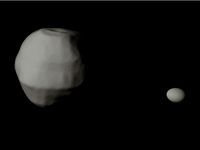
65803 Didymos and Dimorphos scaled one in eight thousand by tato_713
...
flat earth
250m
expanding earth
60m, 120m
spaceship of ezekiel
80, 160
thingiverse
free

Gaijin flowership scaled one in three thousand by tato_713
...
flat earth
250m
expanding earth
60m, 120m
spaceship of ezekiel
80, 160
thingiverse
free

HD 189733 A b heat map scaled one in one billion by tato_713
...reconstruction)
60m,
120m
flat earth
250m
expanding earth
60m, 120m
thingiverse
free

M87* photon ring scaled one in 1.5*10^15 by tato_713
...contrast, super masive black holes can have a density similar or even lower than water. this is because the...
thingiverse
free

Spaceship of Ezekiel scaled one in 160 by tato_713
...
flat earth
250m
expanding earth
60m, 120m
spaceship of ezekiel
80, 160
thingiverse
free

Rama scaled one in 500 thousand by tato_713
...
flat earth
250m
expanding earth
60m, 120m
spaceship of ezekiel
80, 160
Eternia
3d_export
$5

Sword Of Eternia HeMan 3D Model
...sword of eternia heman 3d model
3dexport
sword eternia he man he-man
sword of eternia heman 3d model starius 63582 3dexport
3ddd
$1

Шкаф платяной трехдверный HTA0 и плитка ETERNIA от Ape Ceramica
...зготовления: массив ели
размеры: 1900х660хв2070 мм
2.плитка
производитель: ape ceramica
коллекция: eternia
размеры:200х200мм
thingiverse
free

Orko by cerberus333
...orko by cerberus333 thingiverse orko, the nerd of eternia ...
thingiverse
free

Royal Palace Guard - MOTU - 4x poses
...are the standing military of the planetary government of eternia and also enforce the laws of the planet's central...
thingiverse
free

Masters of the Universe Dice by ck85bigboss
...working on. can also be used for "battle for eterniaquot; board game. generic dice sides: 1 axe (for crits)...
thingiverse
free

MOTU Sorceress staff by thinkpool
...to print before you start casting spells and riding eternia of the evil forces of skeletor. you will have...
sketchfab
$9

He-Man realistc 1982 version animated
...twin brother of she-ra. he-man and his friends defend eternia and the secrets of castle grayskull from the evil...
thingiverse
free

He-Man : Skeletor Bust by MustangDave
...art game mod machinima join me thingiverse, we'll rule eternia ...
thingiverse
free

MOTU - Cringer
...pet cat of prince adam. when adam must defend eternia by transforming into he-man, he can use the same...
Tato
3ddd
$1

Tato 01, IL Loft
... om
стул tato 01 от итальянской компании il loft, размер: 700x500x840
источник: www.illoft.com
материалы в комплекте.
turbosquid
$8

TATO JIL TABLE LAMP
...l table lamp for download as jpg, 3ds, max, dxf, obj, and fbx on turbosquid: 3d models for games, architecture, videos. (1489908)
design_connected
$11

Jil Table Light
...jil table light designconnected tato italia jil table light computer generated 3d model. designed...
design_connected
$11

Biba Table Lamp
...biba table lamp designconnected tato italia biba table lamp computer generated 3d model. designed...
3d_sky
free

Tato 01, IL Loft
...1, il loft
3dsky
chair of the italian company of tato 01 il loft, size: 700x500x840 source: www.illoft.com
materials in the kit.
3dbaza
$3

Tato PIEDI REGOLABILI TABLE BY IGNAZIO GARDELLA (123600)
...tato piedi regolabili table by ignazio gardella (123600)
3dbaza
tato piedi regolabili by ignazio gardella table 3d model
thingiverse
free

Tato Cube 3 / Cube3 Extruder Original Hobbed & 608 Bearing by mdorignac
...ruder original hobbed & 608 bearing by mdorignac
thingiverse
tato cube 3 / cube3 extruder original hobbed & 608 bearing
thingiverse
free

Couch Phone-tato by mmarcoux98
... ability.
finally do let me know of other compatible phones and phones you would like a couch phone-tato for.
thanks and enjoy!
3dbaza
$3

Wallie Chandelier by Lorenza Bozzoli for Tato (137297)
... 928<br>xform: no<br>box trick: no<br>model parts: 2<br>render: v-ray<br>formats: 3ds max 2014, obj
3dbaza
$3

Anita Table Lamp by Lorenza Bozzoli for Tato (137153)
... 960<br>xform: no<br>box trick: no<br>model parts: 2<br>render: v-ray<br>formats: 3ds max 2014, obj
713
design_connected
$11

713
...713
designconnected
cassina 713 coffee tables computer generated 3d model. designed by theodore waddell.
turbosquid
free

glider PH-713
... available on turbo squid, the world's leading provider of digital 3d models for visualization, films, television, and games.
3ddd
free

Italamp fashion lighting 713
...13
3ddd
italamp , fashion
люстра - italamp fashion lighting 713
размеры - d60 см, h29 см
3ddd
$1

N-Light 713-03-52AC Antique Copper/713-03-12CH Polished Nickel
...ch polished nickel
3ddd
подвес
подвес в корабельном стиле
713-03-52ac antique copper n-light
713-03-12ch polished nickel n-light
3ddd
$1

tisserant as-713
...ch's , tisserant
3ds max 2014
3ds max 2011
fbx
obj
textures
materials
real size
3d_export
$60

Architecture 713 3D Model
...lege campus max street landscape commercial building medical hospital offices
architecture 713 3d model lotusmodel 49098 3dexport
3d_export
$150

3d building 713 3D Model
...erior vray sitting accesorie apartment home visualization sofa couch table chair
3d building 713 3d model kanhtart 46553 3dexport
3ddd
$1

NLight 713-03-52AC
...light , подвес
потолочная чаша - с шарниром.
внизу плафона - матовое рассеивающее стекло
3d_export
$50

3D Home 713 3D Model
... chair furniture texture table lamp apartment rug carpet restaurant hotel sitting
3d home 713 3d model richard3015 46995 3dexport
humster3d
$40

3D model of Acer Iconia Tab 7 (A1-713)
...d 3d model of acer iconia tab 7 (a1-713) in various file formats. all our 3d models were created maximally close to the original.
Sixty
3d_ocean
$5

Sixties Fan
...sixties fan
3docean
classic fan furniture interiors old school sixties vintage
a home fan from the sixties.
3ddd
$1

sixties lamp
...sixties lamp
3ddd
дизайнер максим максимов настольный светильник sixties lamp
3ddd
$1

avmazzega - sixty
...m/eng/prodotti_scheda.html?s=&c;=moderni&t;=&f;=sixty&l;=&p;=&r;=1&i;=46&if;=sixty&mc;=ap1083
3ddd
$1
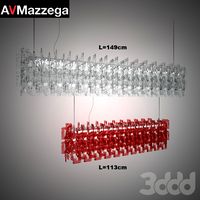
avmazzega - sixty
...m/eng/prodotti_scheda.html?s=&c;=moderni&t;=&f;=sixty&l;=&p;=&r;=1&i;=50&if;=sixty&mc;=so3126
turbosquid
$18

Armchair Sixties
... available on turbo squid, the world's leading provider of digital 3d models for visualization, films, television, and games.
turbosquid
$10

avmazzega - sixty
... available on turbo squid, the world's leading provider of digital 3d models for visualization, films, television, and games.
turbosquid
$2

TV Sixties
... model tv sixties for download as c4d, 3ds, dxf, fbx, and obj on turbosquid: 3d models for games, architecture, videos. (1578990)
turbosquid
free

Lamp Sixties
... available on turbo squid, the world's leading provider of digital 3d models for visualization, films, television, and games.
3ddd
free
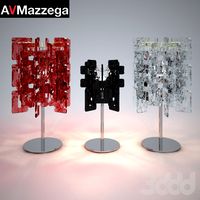
avmazzega - sixty
...m/eng/prodotti_scheda.html?s=&c;=moderni&t;=&f;=sixty&l;=&p;=&r;=1&i;=57&if;=sixty&mc;=ta4067
3ddd
$1

Hoff Sixties
...
производитель hoff
габариты:
глубина - 64 см.
ширина - 69 см.
высота - 78 см.
в файле два исполнения цвета.
полигонов: 87956
Million
turbosquid
$1

Ceratosaurus from one million years BC (1966)
...tosaurus from one million years bc (1966) for download as max on turbosquid: 3d models for games, architecture, videos. (1221538)
turbosquid
free

Triceratops from one million years BC (1966)
...ceratops from one million years bc (1966) for download as max on turbosquid: 3d models for games, architecture, videos. (1190627)
turbosquid
$99

ANTELOPE SKULL FOSSIL (50 Million Years Old)
... available on turbo squid, the world's leading provider of digital 3d models for visualization, films, television, and games.
3d_export
$5

bust
...bust 3dexport total point 5.649 million subdivision levels: 6 simple export from ztl...
3d_export
$5

head detalized
...head detalized 3dexport total point 9.788 million subdivision levels: 6 simple export from ztl...
3d_export
$5

creature head hipoly
...creature head hipoly 3dexport total point 13.459 million subdivision levels: 6 simple export from ztl...
3d_ocean
$5

Money Stacks
...bills cash cinema 4d dollars economy hundreds lottery million million money paper pile prize realistic stack thousands included: single...
3d_export
$5

hand detalized
...hand detalized 3dexport total point 3.263 million subdivision levels: 6 simple export from ztl file simple...
3d_export
$5

devil horns
...devil horns 3dexport total point 7.821 million subdivision levels: 6 simple export from ztl file simple...
3d_export
$5

ufo sculpture
...sculpture 3dexport this model is high poly has 5 million polygons. each person represents a ufo in his own...
Scaled
turbosquid
$20

Weight scale or Bathroom Scale
...ght scale or bathroom scale for download as max, fbx, and obj on turbosquid: 3d models for games, architecture, videos. (1664576)
turbosquid
$19

Scale
...e
turbosquid
royalty free 3d model scale for download as fbx on turbosquid: 3d models for games, architecture, videos. (1411722)
turbosquid
$5

Scales
...s
turbosquid
royalty free 3d model scales for download as ma on turbosquid: 3d models for games, architecture, videos. (1393439)
turbosquid
$40

Scale
... available on turbo squid, the world's leading provider of digital 3d models for visualization, films, television, and games.
turbosquid
$17

Scales
... available on turbo squid, the world's leading provider of digital 3d models for visualization, films, television, and games.
turbosquid
$12

Scale
... available on turbo squid, the world's leading provider of digital 3d models for visualization, films, television, and games.
turbosquid
free

Scale
... available on turbo squid, the world's leading provider of digital 3d models for visualization, films, television, and games.
3d_export
$7

of scales
...s have a flat point of support. the samples are rendered in the standard cinema 4d renderer. enjoy your use and creative success.
3d_export
$5
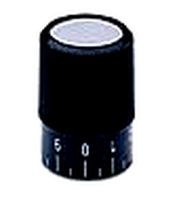
scale knob
...scale knob
3dexport
scale knob
3d_export
$20

cartoon weight scale or bathroom scale
...cartoon weight scale or bathroom scale
3dexport
texture size:512px number of texture:1 texture format: png
One
turbosquid
$2

one plus one
... available on turbo squid, the world's leading provider of digital 3d models for visualization, films, television, and games.
3ddd
$1

One
...one
3ddd
стул
офисный стул one
3ddd
free

one
...
palazetti one ,http://palazzetti.ca/index.php/component/virtuemart/seating/armchairs-lounges/one-chair-detail?itemid=0
turbosquid
$35

One A
... available on turbo squid, the world's leading provider of digital 3d models for visualization, films, television, and games.
turbosquid
free
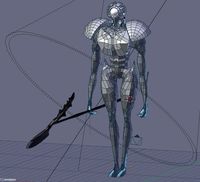
One
... available on turbo squid, the world's leading provider of digital 3d models for visualization, films, television, and games.
3ddd
$1

Стул One
...стул one
3ddd
one , magis
кресло magis s.p.a , one
3ddd
$1

Стул One
...стул one
3ddd
one , magis
кресло one chair (4star), magis s.p.a.
3d_export
$20

xbox one
...xbox one
3dexport
xbox one
3ddd
$1

xbox one
... консоль , джойстик
xbox one + kinect + gamepad
3ddd
free

One
...nstantin grcic
артикул ct-284 (cosmorelax.ru)
размер l36xw41xh82.5, sh 77cm
цвет черный, красный
материал алюминий
вес 2,5 кг
